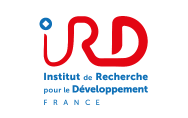The aim of this research work is to investigate the potential of the variational approach for calibrating a simple continuous hydrological model (GRD) involved in several flash-flood modelling applications. This model is defined on a rectangular 1 km2 resolution grid, with three parameters being associated to each cell. 23 watersheds are chosen as the study benchmark. These watersheds are all located in the metropolitain France and present various hydrological characteristics (shapes, surfaces, bedrock). Twenty-two of them belong to the Mediterranean region and one spreads over the South-East of Paris. For these watersheds, the discharge observations at several gauging stations, gridded rainfall and potential
evapotranspiration estimates are continuously available for the 2007-2018 period at an hourly time step.
In the variational approach one looks for the optimal solution by minimizing the standard quadratic cost-function which penalizes the misfit between the observed and predicted values,
under some additional a-priori constraints. The cost-function gradient is efficiently computed using the adjoint model. In numerical experiments, the benefits of using the distributed against the uniform calibration are measured in terms of the model predictive performance, in temporal, spatial and spatio-temporal validation. Overall, distributed calibration shows encouraging results, providing better model predictions and relevant spatial distribution of some parameters.
Some complementary numerical calibration experiments have been performed. Some of them integrates several environmental descriptors to improve the robustness of the calibrated parameters and the model predictive performances. Others use a new cost function which derive from the concepts of the robust estimation theory. These latter experiments explore future research directions. Future perspectives are identified, such as the development of a regionalisation approach for the model parameters or real-time assimilation of observations in order to produce forecasts.
This thesis was the result of a collaboration between INRAE-Aix,RECOVER and INRAE-Montpellier, G-EAU (Igor Gejadze and Pierre-Olivier Malaterre). It took place in a videoconference on Thursday 10/12/20 at 2 pm in front of the jury composed of :
- Hélène Roux, Lecturer INP/IMFT, Reporter
- Arthur Vidard, IGE Researcher, Reporter
- Anne-Catherine Favre, Research Director IGE, Examiner
- Roger Moussa, Research Director, INRAE, Examiner
- François-Xavier Le Dimet, Professor Emeritus IGE, Guest






